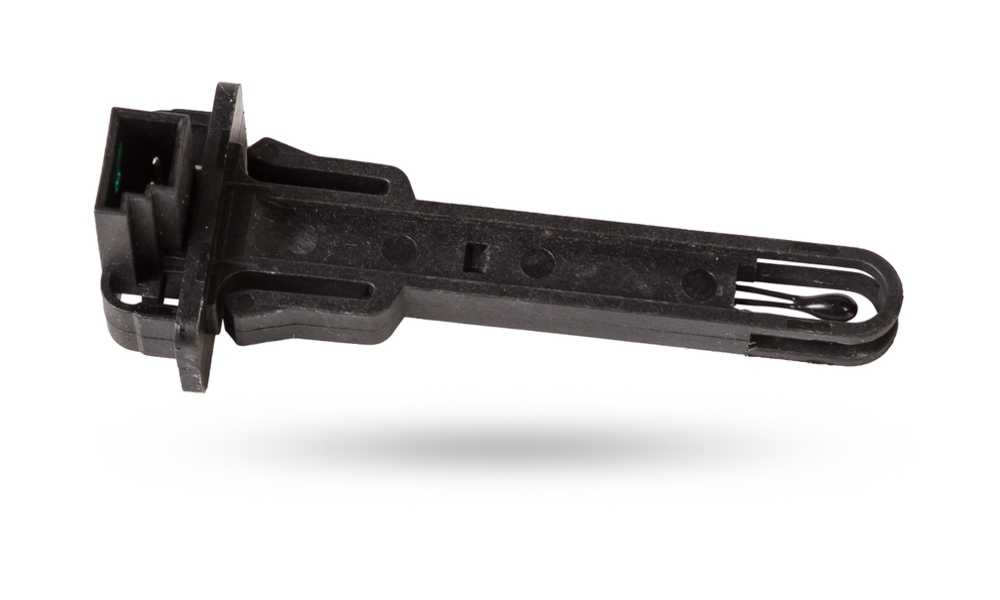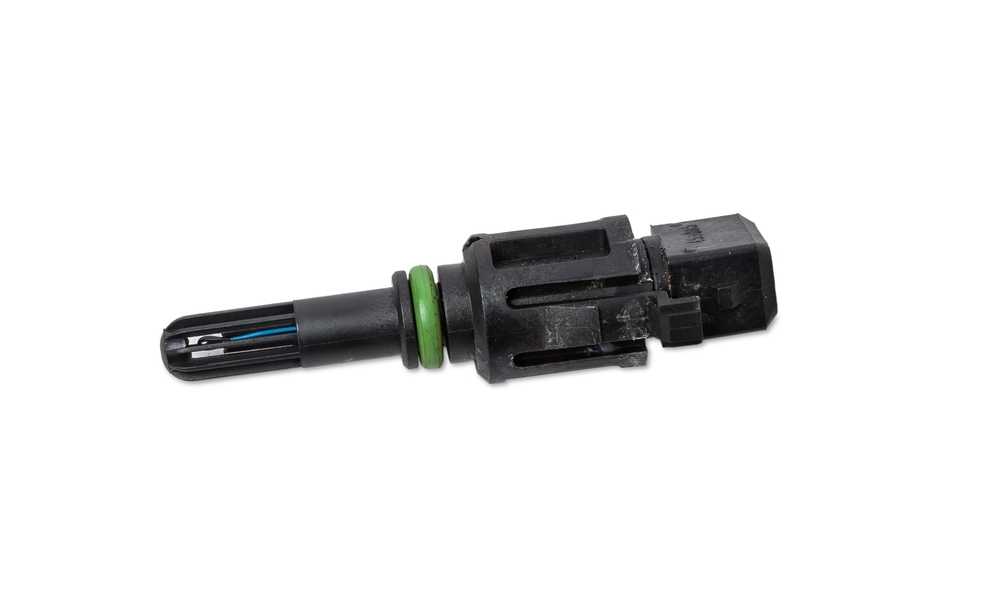Have you ever found yourself in a situation where your car’s coolant temperature sensor is causing issues? You’re not alone! The coolant temperature sensor plays a crucial role in monitoring the engine’s heat levels and preventing overheating. But what if you could bypass this sensor and still keep your car running smoothly? In this blog post, we’ll delve into the world of coolant temperature sensors, explore whether they’re really necessary, and reveal step-by-step instructions on how to bypass coolant temperature sensor. So buckle up and get ready to dive into the fascinating realm of coolants and sensors!
What is coolant temperature sensor and how does it work?
The coolant temperature sensor, also known as the engine coolant temperature (ECT) sensor, is a small but mighty component in your car’s engine. It plays a crucial role in monitoring the temperature of the coolant and relaying that information to the engine control unit (ECU).
But how does it work? Well, inside the sensor housing lies a thermistor – a resistor whose resistance changes with temperature. As the coolant heats up, so does the thermistor. This change in resistance alters the voltage signal sent to the ECU. The ECU then uses this data to make adjustments to various systems within your vehicle.
In simpler terms, think of it as an internal thermometer for your car’s engine. It continuously measures and reports on just how hot or cold things are under that hood.
By monitoring these temperatures, your vehicle can optimize fuel delivery, adjust ignition timing, and even trigger cooling fans when necessary. In short, it helps keep everything running smoothly and prevents potential damage from overheating.
Now that we have a basic understanding of what a coolant temperature sensor is and how it works let’s explore whether it’s really necessary or if there are ways to bypass it altogether!
Is a coolant temperature sensor necessary?

The coolant temperature sensor is an important component in a car’s cooling system. It monitors the temperature of the engine coolant and sends this information to the engine control unit (ECU). This allows the ECU to adjust factors such as fuel delivery and ignition timing to optimize performance and fuel efficiency.
While it may not be absolutely necessary for a car to have a functioning coolant temperature sensor, it is highly recommended. Without accurate temperature readings, the ECU may not be able to make appropriate adjustments, leading to potential issues such as poor fuel economy, decreased performance, or even engine damage.
Ignoring or bypassing the coolant temperature sensor can also lead to other problems. The check engine light may come on, indicating a fault in the cooling system. Additionally, if there are any underlying issues with overheating or coolant leaks, these may go unnoticed without a working sensor.
While it might be possible to bypass the coolant temperature sensor temporarily in certain situations, it is not advisable for long-term use. A properly functioning sensor ensures that your vehicle runs efficiently and helps prevent potential damage from occurring.
Can you bypass the temperature sensor?
One question that car enthusiasts often ask is whether it’s possible to bypass the temperature sensor in their vehicle. The coolant temperature sensor plays a crucial role in monitoring the engine’s temperature and relaying this information to the engine control unit (ECU). This data helps the ECU adjust various parameters, such as fuel injection timing and ignition timing, for optimum performance.
While some may argue that bypassing the temperature sensor can lead to improved performance or allow you to continue driving without addressing any underlying issues, it is important to note that tampering with this component can have serious consequences.
Attempting to bypass the coolant temperature sensor could result in inaccurate readings being sent to the ECU. This can lead to improper fuel mixture ratios, which may cause engine misfires or even damage over time. Additionally, modern vehicles are equipped with advanced diagnostic systems that rely on accurate sensor readings. Tampering with these sensors can trigger warning lights and potentially void your warranty.
It’s also worth mentioning that bypassing a critical safety feature like a coolant temperature sensor goes against responsible automotive maintenance practices. Ignoring potential issues or attempting quick fixes without addressing root causes can lead to more expensive repairs down the line.
While it may be tempting for some DIYers or performance enthusiasts to try bypassing their vehicle’s coolant temperature sensor, doing so is not recommended due to potential risks and adverse effects on overall engine performance. It’s always best practice to consult a qualified mechanic if you suspect an issue with your cooling system rather than attempting risky workarounds yourself.
How to bypass coolant temperature sensor? [step by step]
1. Safety precautions and preparation
When it comes to bypassing the coolant temperature sensor in your vehicle, safety should always be your top priority. Before attempting any modifications to the sensor or its connections, make sure you take the necessary precautions and prepare yourself for the task at hand.
Ensure that your vehicle is parked on a level surface and turned off. This will help prevent any accidental movement while you are working on it. Additionally, wearing protective gloves and eyewear is highly recommended to protect yourself from any potential hazards.
Next, gather all the tools and materials you will need for the job. This may include a socket wrench set, pliers, wire cutters/strippers, electrical tape or connectors (if necessary), and a clean cloth or rag.
Before starting any work on your vehicle’s cooling system or sensors, it’s important to let the engine cool down completely. Opening up the coolant system when it’s still hot can result in serious burns from escaping steam or hot coolant.
Once you have taken these safety precautions and gathered all necessary tools and materials, you can proceed with locating the coolant temperature sensor as outlined in step 2 of this guide.
Remember to always prioritize safety when working on your vehicle!
2. Locating the coolant temperature sensor
When it comes to bypassing the coolant temperature sensor, one of the first steps is locating its position in your vehicle. The coolant temperature sensor can usually be found near the engine block or cylinder head. However, keep in mind that its exact location may vary depending on the make and model of your car.
To find the coolant temperature sensor, you’ll need to open up your vehicle’s hood and familiarize yourself with the engine compartment. Look for any wires or connectors that are attached to a small plastic or metal component near the engine. This component is likely to be the coolant temperature sensor.
In some vehicles, you may need to remove certain parts or covers to gain access to the sensor. Referencing your vehicle’s manual can provide more specific instructions on how to locate it.
Once you have identified the coolant temperature sensor, take note of its shape and size as this will help you distinguish it from other components during reconnection later on.
Remember, every vehicle is different, so if you’re unsure about locating the coolant temperature sensor, consult a professional mechanic or refer back to your car’s manual for guidance.
3. Disconnecting the sensor

Disconnecting the coolant temperature sensor is a crucial step in bypassing it. Before you begin, make sure to have all the necessary tools at hand and take proper safety precautions. You don’t want any accidents or injuries when working on your vehicle.
To disconnect the sensor, locate it first. It is usually located near the engine block or radiator. Refer to your vehicle’s manual for specific instructions on its location.
Once you’ve found the sensor, carefully unplug its electrical connector. Be gentle and avoid using excessive force to prevent any damage to the connector or wiring.
After disconnecting the sensor, wait for some time for the system to reset itself. This allows any error codes related to coolant temperature readings to clear from the system’s memory.
When enough time has passed, reconnect the coolant temperature sensor by plugging back in its electrical connector firmly. Ensure that there are no loose connections or wires hanging loosely.
To verify if you successfully reset and reconnected everything correctly, start your car and observe if there are any warning lights or abnormal behavior related to coolant temperature displayed on your dashboard.
Remember, this article provides information about bypassing a coolant temperature sensor but always consult with a professional mechanic before attempting any modifications on your vehicle’s systems.
4. Waiting for the system to reset
After disconnecting the coolant temperature sensor, it’s important to give the system some time to reset. This allows the car’s computer to adjust and adapt to the absence of input from the sensor.
During this waiting period, you might notice a few changes in your vehicle’s behavior. For example, your check engine light may turn on or you may experience a decrease in fuel efficiency. These are normal reactions as the car tries to compensate for the missing information.
It is recommended that you wait at least 10-15 minutes before moving on to reconnecting the coolant temperature sensor. This gives ample time for any stored codes or data related to the sensor to clear from memory.
While waiting for the system reset, take this opportunity to inspect other components under your hood and ensure everything is in proper working order. Use this time wisely and perform routine maintenance tasks such as checking fluid levels or inspecting hoses and belts.
Remember that patience is key during this step of bypassing the coolant temperature sensor. Rushing through can lead to unforeseen issues down the line, so it’s best not to cut corners when it comes resetting your car’s computer system.
So sit back, relax, and allow your vehicle some breathing room while it adjusts without relying on readings from its trusty coolant temperature sensor!
5. Reconnecting the coolant temperature sensor
Once you have waited for the system to reset, it’s time to reconnect the coolant temperature sensor. This step is crucial as it ensures that your vehicle’s engine receives accurate temperature readings again.
To reconnect the sensor, carefully align the plug with its corresponding socket and firmly push them together until you hear a click or feel them lock into place. Make sure there are no loose wires or connections.
After reconnection, double-check everything to ensure proper installation. Inspect for any damages or signs of wear on the sensor and its wiring. If you notice any issues, it may be necessary to replace the sensor.
Once everything is securely connected, start your car and monitor if the coolant temperature gauge is functioning correctly. The gauge should display an accurate reading in relation to the engine’s temperature.
If all seems well, take your car for a test drive and pay attention to any changes in performance or warning lights on your dashboard. If there are no abnormal issues present after driving for some time, then congratulations! You have successfully bypassed and reconnected your coolant temperature sensor.
Remember that this guide serves as informational purposes only. It’s important to consult with a professional mechanic before attempting any modifications on essential components like a coolant temperature sensor. Safety should always be prioritized when working with automotive systems.
6. Verifying the reset
Once you have reconnected the sensor, it’s crucial to ensure that the system has been successfully reset and that everything is functioning as it should.
To verify the reset, start by turning on your vehicle and allowing it to idle for a few minutes. Keep a close eye on the temperature gauge or any warning lights on your dashboard. If they remain within normal ranges and there are no signs of overheating or other issues, this indicates that the reset was successful.
Next, take your car for a short test drive. Pay attention to how it performs and if any abnormal symptoms arise, such as erratic engine behavior or fluctuating temperatures. If everything feels and looks normal during the test drive, then you can be confident that your bypass of the coolant temperature sensor was effective.
Remember, verifying the reset is essential for ensuring both your safety and the health of your vehicle’s engine. So take these steps seriously before hitting the road again without a working coolant temperature sensor in place!
Can you drive a car without a coolant temp sensor?

This is a question that many car owners may have, especially if they are experiencing issues with their sensor and are considering bypassing it. While it is technically possible to drive a car without a coolant temperature sensor, it is not recommended.
The coolant temperature sensor plays an important role in the functioning of your vehicle’s engine. It measures the temperature of the engine coolant and sends this information to the engine control unit (ECU). The ECU then adjusts various parameters such as fuel mixture, ignition timing, and cooling fan operation based on this data.
Without a properly functioning coolant temp sensor, your car’s engine may not run efficiently or optimally. It could result in poor fuel economy, decreased performance, and potentially even damage to the engine itself. Additionally, driving without a working temperature sensor could lead to overheating issues since you won’t receive timely warnings if your engine starts to run too hot.
While it might be tempting to bypass the coolant temp sensor in order to keep your car running temporarily, it is always best to address any issues with the sensor promptly. Consult with a qualified mechanic who can diagnose and fix any problems with your vehicle’s cooling system rather than attempting DIY solutions that could cause further harm.
Remember – safety should always be prioritized when operating any kind of machinery or vehicle. So if you’re facing troubles with your coolant temp sensor or suspect there might be an issue brewing under its hood – stop by at an expert auto repair shop as soon as possible!
Is there a fuse for coolant temperature sensor?
This is a common question among car owners who are looking to troubleshoot issues with their coolant temperature sensor. The answer, unfortunately, is not a simple yes or no.
In some vehicles, there may be a fuse specifically dedicated to the coolant temperature sensor. This fuse helps protect the electrical circuit that powers the sensor and ensures it functions properly. If this fuse blows or becomes faulty, it can cause issues with the coolant temperature reading and potentially lead to engine overheating or other problems.
However, not all vehicles have a dedicated fuse for the coolant temperature sensor. In many cases, the sensor is connected to a larger circuit that includes other components as well. In these instances, if there is an issue with the coolant temperature sensor, it may be related to a problem in the overall electrical system rather than just a blown fuse.
It’s important to consult your vehicle’s manual or speak with an automotive professional for specific information about your particular make and model. They will be able to provide guidance on whether there is indeed a fuse for your coolant temperature sensor and how best to address any related issues.
Remember, diagnosing and resolving problems with your vehicle’s cooling system should always be done by trained professionals who have experience working on cars. Trying to bypass or tamper with essential sensors like the coolant temperature sensor without proper knowledge can lead to serious damage or even accidents on the road.
Stay safe!
Final thoughts

Bypassing the coolant temperature sensor can be a tempting solution for those who are experiencing issues with their car’s cooling system. However, it is important to understand that bypassing this sensor may have consequences and should not be taken lightly.
While it is technically possible to bypass the coolant temperature sensor, it is not recommended unless absolutely necessary and done with caution. The coolant temperature sensor plays a crucial role in maintaining the optimal operating temperature of your engine, which is vital for its performance and longevity.
By bypassing the sensor, you risk driving your car without accurate information about its temperature. This can lead to overheating or other serious problems that could cause significant damage to your engine.
If you find yourself in a situation where you believe bypassing the coolant temperature sensor is necessary, make sure to follow proper safety precautions and consult with a professional technician if possible. They will be able to provide guidance specific to your vehicle’s make and model.
Remember, always prioritize the health and safety of your vehicle over any short-term convenience or cost-saving measures. Regular maintenance and addressing any cooling system issues promptly will help ensure that your car continues running smoothly for years to come.
In conclusion (oops!), while we’ve explored how to bypass the coolant temperature sensor in this article, it’s important to approach this topic with caution and seek professional advice when needed. Your vehicle’s cooling system deserves proper care and attention – don’t take shortcuts that could potentially lead down a bumpy road!



